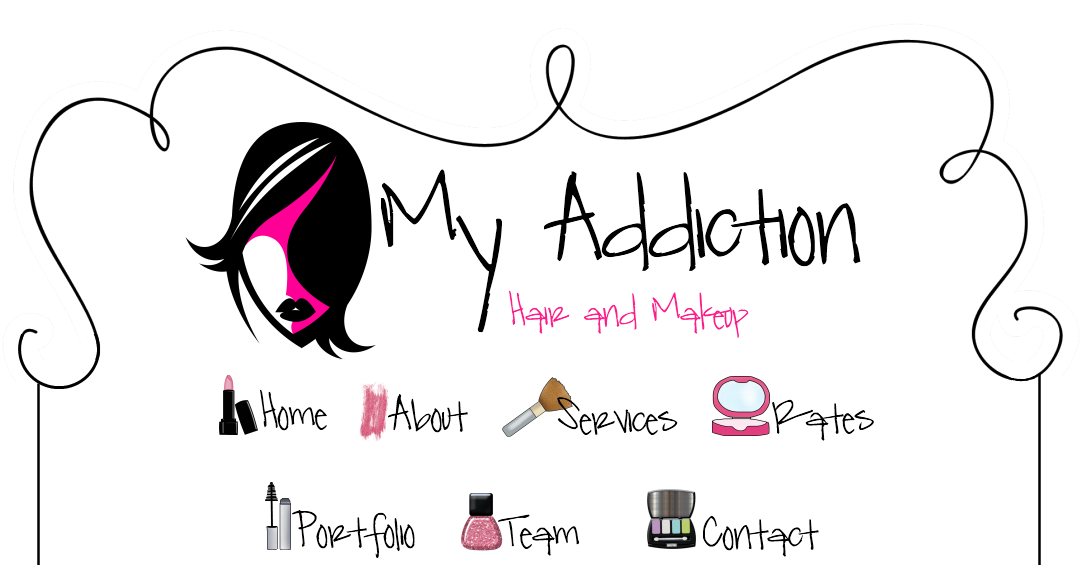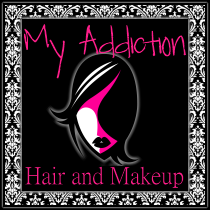Since so many people have questions about BHA's and AHA's, I thought I would post this for everyone to read and learn about them. It's long but very informative, hope it helps! Read and learn:
Understanding Exfoliants
AHA vs. BHA
There are two primary topical ways to exfoliate skin, either with alpha hydroxy acids (AHAs), or with beta hydroxy acid (BHA). There is only one BHA (beta hydroxy acid) and that is salicylic acid, but there are a variety of AHAs. The five major types of AHAs that show up in skin-care products are glycolic, lactic, malic, citric, and tartaric acids. Of these, the most commonly used and most effective AHAs are glycolic and lactic acids. Both of these have the ability to penetrate the skin, plus they have the most accumulated research on their functionality and benefit for skin.
What glycolic, lactic, and salicylic acids both do is "unglue" the outer layer of dead skin cells, allowing healthier cells to come to the surface. Removing this dead layer can improve skin texture and color, unclog pores, and allow moisturizers to be better absorbed by the skin. Both AHAs and BHA affect the top layers of skin, and they help to improve the appearance of sun-damaged, dry, and/or thickened skin. Sun damage in particular causes the top layer of skin to become thicker, creating a dull, rough appearance on the surface of skin (Sources: Archives of Dermatologic Research, June 1997, pages 404-409; Dermatologic Surgery, May 1998, pages 573-577). There is even research showing AHAs can generate collagen production (Sources: Experimental Dermatology, April 2003, (Supplemental), pages 57-63 and Dermatologic Surgery, May 2001, page 429.)
Because AHAs and BHA work through chemical processes, they can penetrate the skin and produce better results than cosmetic scrubs, which work only on the exposed surface of the skin. And, there is no risk that AHAs and BHA will cause you to lose too much skin. Technically, there is a drop-off rate, meaning the AHA and BHA will exfoliate just the dead or damaged surface skin and leave the healthy skin alone. This is the main reason why you will see a drop-off in performance when using an AHA or BHA product. The dramatic results in the beginning of usage (when the thickened, discolored layers of skin are being removed) seem much more impressive than the results from continued use. This is to be expected, and it is important to note that continued use of an AHA or BHA product is required in order to maintain skin's smooth, even-toned, healthy appearance.
The primary difference between AHAs and BHA is that AHAs are water-soluble, while BHA is lipid-(oil) soluble. This unique property of BHA allows it to penetrate the oil in the pores and exfoliate accumulated skin cells inside the oil gland that can clog pores. BHA is best used where blackheads and blemishes are the issue, and AHAs are best for sun-damaged, thickened, dry skin where breakouts are not a problem (Source: Global Cosmetic Industry, November 2000, pages 56-57).
pH Sensitive AHA and BHA
AHAs work best at concentrations of 5% to 10% with a pH of 3 to 4, and their effectiveness diminishes as you go above a pH of 4.5. BHA works best at concentrations of between 1% and 2%, and at an optimal pH of 3, diminishing in effectiveness as you go past a pH of 4. Both AHAs and BHA lose their effectiveness as a product's pH goes up or the concentration of the ingredient goes down. (Source: Cosmetic Dermatology, October 2001, pages 15–18).
If the cosmetics industry isn't forthcoming about the necessary percentages and pH for a BHA or AHA product (and most companies aren't), how can you tell if it provides decent or effective exfoliation? Consumers can't, not unless they are shopping with pH measuring paper in hand, which is exactly how I rate exfoliants when I review products for my book, newsletter, or Beauty Bulletin. As a general rule, it is best if the AHA ingredient is either second or third on the ingredient list, making it likely that the product contains a 5% or higher concentration of AHAs. For salicylic acid, because only a 2% to 0.5% concentration is required, it is fine if this ingredient is located toward the middle or end of the ingredient list.
It is interesting to not that at any pH, AHAs provide the added benefit of helping to keep water in the skin at the same time that exfoliation is taking place. This is due to the way they affect skin cells adding increased protection. AHAs can also increase the production of ceramides in the skin, which help keep it moist and healthy (Source: Dry Skin and Moisturizers Chemistry and Function, edited by Marie Loden and Howard Maibach, 2000, page 237).
While BHA penetrates deeper into the pore than AHAs, it can be less irritating than AHAs. This is due to BHA's relation to aspirin. Aspirin (acetylsalicylic acid) has anti-inflammatory properties and BHA, salicylic acid, is derived from aspirin and on the skin, retains some of its same anti-inflammatory benefits.
AHA and BHA products can definitely smooth the skin, fade signs of sun damage, correct uneven skin tone, improve texture, unclog pores, and give the appearance of plumper, firmer skin (because more healthy skin cells are now on the surface). Unfortunately, they have no residual effect when you stop using them the skin will go back to the condition it was in before you started.
AHA Confusion
There are AHA sound-alikes, including sugarcane extract, mixed fruit acids, fruit extracts, milk extract, and citrus extract. You may think you've purchased a more natural AHA product when you see these less technical names, but that isn't the case. Although glycolic acid is derived from sugarcane, and lactic acid from milk, that doesn't mean sugarcane extract or milk extract are the same as glycolic or lactic acid, yet they do share these acids water-binding properties, in much the same way as salicylic acid shares the anti-inflammatory properties of its relation, aspirin.
Unless you see glycolic, lactic, malic, tartaric, or citric acid on the ingredient list, it's all too vague and meaningless, making it impossible to determine what you are really buying. My advice is to be very suspicious of any product that claims an association with AHAs but contains a variety of sound-alike ingredients.
BHA Confusion
Products boasting that they contain a natural source of salicylic acid (BHA) usually add willow bark. Willow bark contains salicin, a substance that when taken orally is converted by the digestion process to salicylic acid. That means the process of converting willow bark to salicylic acid requires the presence of enzymes to turn the salicin into salicylic acid. The likelihood that willow bark in the tiny amount used in cosmetics can mimic the effectiveness of salicylic acid on skin is in all likelihood impossible. However, willow bark may indeed have some anti-inflammatory benefits for skin because, in this form, it appears to retain more of its aspirin-like composition.
What About Higher Concentrations of AHAs?
Removing the outer layer of skin can be taken too far, and many cosmetic dermatologists and researchers worry that the increased irritation and exfoliation caused by higher concentrations (above 10%) of AHAs may be too much for skin. Without more evidence showing a benefit from higher concentrations, I feel that you can achieve great results without any unwanted side effects. Further, the positive results women and men perceive with higher concentrations of AHAs may come from the swelling and edema they cause. That may diminish the appearance of wrinkles and make the skin feel smoother, but it is most likely not best for the long-term health of the skin due to the increased amount of constant irritation.
Polyhydroxy Acids
The search for an effective form of AHA or an extra ingredient that can enhance performance and reduce irritation has been a popular topic of discussion among cosmetics formulators. Gluconolactone is a type of polyhydroxy acid that NeoStrata believes serves both ends: It is supposed to be just as effective as AHAs but also less irritating.
Gluconolactone (PHA) is similar to AHAs. The significant difference between the two is that gluconolactone has a larger molecular structure, which limits its penetration into the skin, resulting in a reduction of irritating side effects in some skin types. So is gluconolactone better for your skin than AHAs? Research indicates that AHA and PHA perform identically with AHA having a slight edge for improving the appearance of skin and PHA having less risk of irritation (Source: Cutis, February 2003, (2 Supplemental), pages14-17).
Retinoids (Retin-A, Differin, and Tazorac)
Let me make it perfectly clear that retinoids are not exfoliants, though many people think that's what they do. Retinoids are a general term referring to a vast range of ingredients derived from vitamin A. Prescription-only, topically applied retinoids are significant for skin because they can positively affect the way cells are formed deep in the dermis.
If you have sun-damaged, dry, wrinkled, or acne-prone skin, you should become familiar with the names Retin-A, Renova, Differin, Avita, and Tazorac, which all contain different forms of retinoids. The active ingredient in Retin-A, Avita, and Renova is tretinoin, Differin uses adapalene, and Tazorac uses tazorotene. In fact, both Renova and Tazorac have been approved by the FDA for the treatment of wrinkles (Sources: Dermatologic Surgery, June 2004, pages 864-866; Archives of Dermatology, November 2002, pages 1486-1493; Clinical and Experimental Dermatology, October 2001, pages 613-618; and www.fda.gov).
Exfoliants such as AHAs and BHA primarily affect the surface of the skin (epidermis) or the lining of the pore by actually ungluing or dissolving layers of skin cells. In contrast, retinoids affects the lower layers of skin (dermis), where new skin cells are produced. Retinoids actually communicate with a skin cell as it is being formed, telling it to develop normally instead of developing as a sun-damaged or genetically malformed skin cell.
Why the confusion about the effect retinoids can have on the skin? Primarily it's due to the fact that products containing retinoids can cause irritation and inflammation, resulting in the skin becoming flaky and dry. This flaking and dryness is not exfoliation, nor is it a desirable or advantageous result. If retinoids cause your skin to be consistently dry and flaky, it is a problem and you should probably avoid products that contain it or reduce how often you use them.
Despite the valuable effect retinoids can have for skin, don't expect retinoids to erase wrinkles because they are not a wrinkle cure. However, if skin cells can be produced with a healthier form and shape, the skin's surface will have a smoother appearance, skin cells will do their job of turning over in a more normal fashion, the protective outer layer of skin will remain intact, enhancing the skin's healing response, and on and on. In essence, the skin will behave and look the way it did (to some extent) before it was damaged by the sun.
Regardless of these positive effects, retinoids will be useless, and the skin will be prone to more damage, if you do not wear a sunscreen as well. Not a wrinkle cream in the world, even one approved by the FDA, can have positive results if you don't use an effective sunscreen; without that, you are just adding to damage you already have accumulated.
What retinoids, AHA, and BHA products have in common is that once you stop using them, your skin will revert to the way it was before. These products will not produce permanent change. The smooth exterior lasts only as long as you use them. But used together long-term, they are a formidable weapon in the battle against wrinkles and blemishes.
Located inside
My Addiction Skin Care
My Addiction Skin Care
www.MyAddictionSkinCare.com
Tweet us!
 "Like" us..
"Like" us.. 





0 comments:
Post a Comment